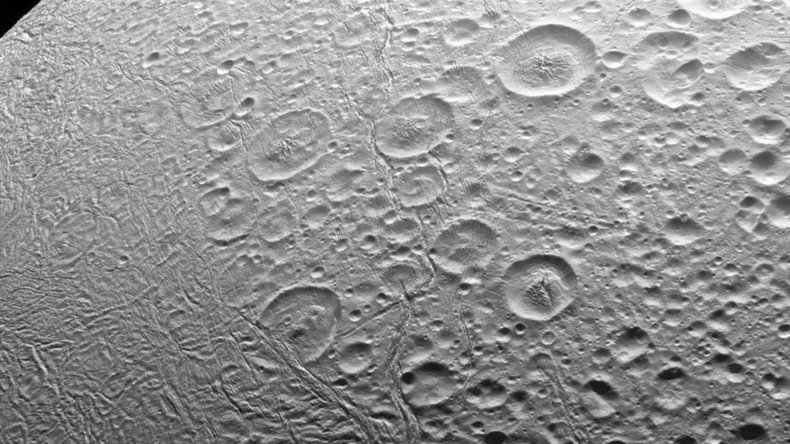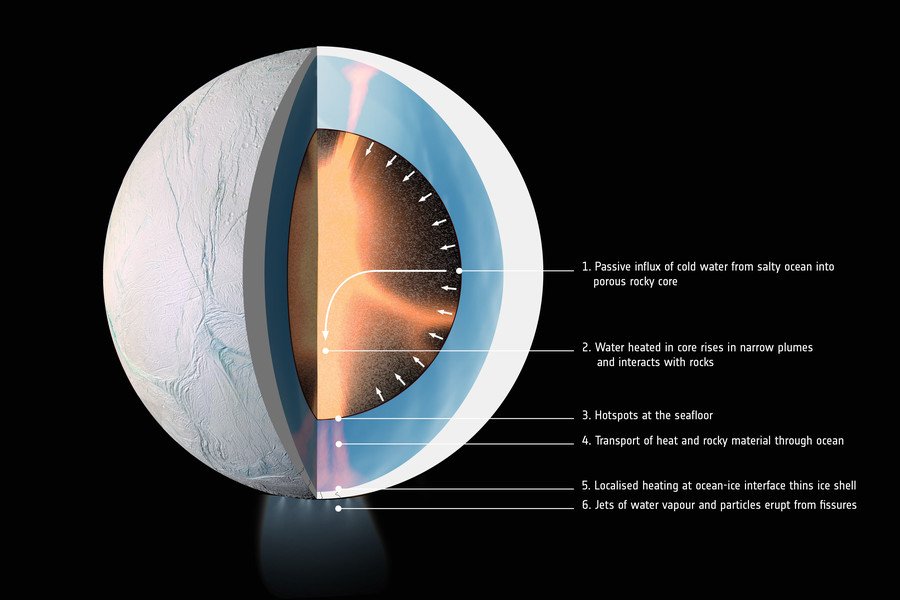What’s bubbling beneath surface of Saturn moon’s giant ocean?

Scientists believe ongoing hydrothermal activity is heating the ocean that envelopes Saturn’s sixth moon. The activity is thought to occur beneath the ice crust on Enceladus, which was discovered in 1789.
The moon is one of the brightest objects in the solar system, due to reflections from ice and snow. The existence of a global ocean has led NASA to describe the moon as a “promising lead” in the search for worlds where alien life could exist. The theory is that a ‘space-sea’ could sustain plant species, or even life-forms which have an earth-like potential to evolve.
READ MORE: Saturn destroys Cassini in dramatic final moments (VIDEO)
Now a team of researchers probing the moon’s potential for life has determined that the prevalence of salts and silica dust means something is bubbling under the ice, keeping the ocean from freezing entirely. The team believes the moon has a porous core that pushes plumes of hot water and material through the ocean. It could explain the thinning of Enceladus’ ice shell in certain areas.

The observations have been published in Nature Astronomy, with scientists from Europe and the US poring over data obtained by NASA spacecraft Cassini.
The vessel was retired this year with NASA operators deliberately plunging it into Saturn. But prior to its demise Cassini garnered valuable information. This included details on varying ice patterns above the Enceladus ocean and geyser-like jets spewing water vapor.
Using models to explain these occurrences, researchers have concluded that the ocean must be heated by something more than tidal activity. “In order to explain these observations, an abnormally high heat power is required, as well as a mechanism to focus endogenic activity at the south pole,” the study states.
READ MORE: Cassini revelations: The key discoveries from NASA’s Saturn mission (PHOTOS, VIDEOS)
Lead author Gael Choblet, of the University of Nantes, said a permeable center is the likely cause of water flows around 90 degrees Celsius. “Where Enceladus gets the sustained power to remain active has always been a bit of a mystery, but we’ve now considered in greater detail how the structure and composition of the moon’s rocky core could play a key role in generating the necessary energy,” Choblet said.
“Our simulations can simultaneously explain the existence of an ocean at a global scale due to large-scale heat transport between the deep interior and ice shell, and the concentration of activity in a relatively narrow region around the south pole,” he added.
The European Space Agency is due try ground-penetrating radar on Jupiter soon. It’s hoped the technology could one day prove the Encedulus heating theory beyond doubt, and pave the way for extra-terrestrial oceans to be explored in greater detail.












